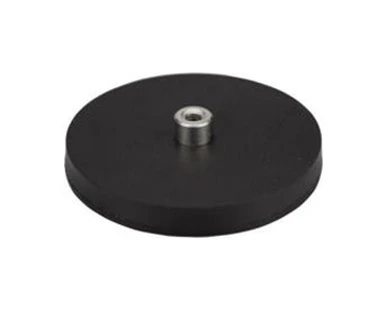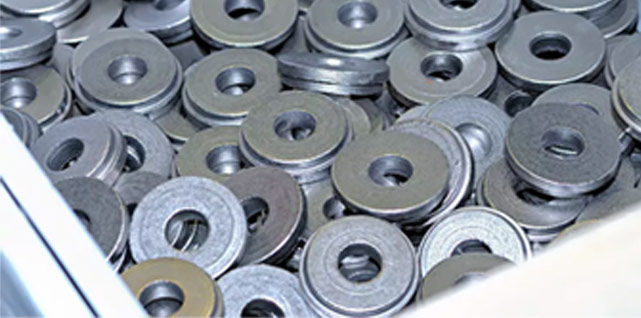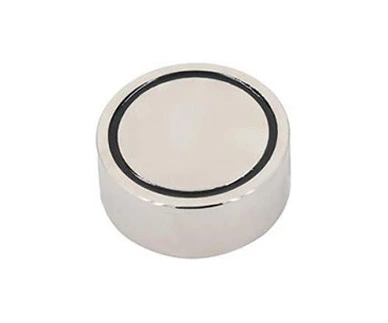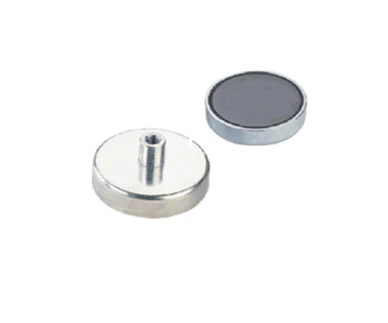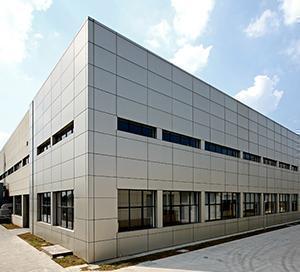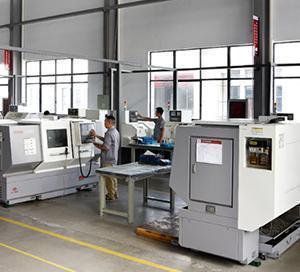Significance
Hardware disease causes a cow to lose her appetite, thus suffering weight loss and lower milk production.
If farmers, ranchers and veterinarians didn't feed cows the cow magnets, then cows would run the risk of developing hardware disease. This ailment occurs when metal objects become lodged in a cow's stomach, causing her to lose her appetite. For dairy cows, this means a loss in milk production. For feeder cattle (those used to produce beef), this means a loss in weight. Both are not only detrimental to the cow, but to the farmers as well.
Developments
When a cow is fed a cow magnet, the magnet stays in her stomach, usually for her entire life.
Cow magnets initially were made of alnico and about 1cm by 8cm in size, in the shape of a capsule. Alnico is the acronym for aluminum (Al), nickel (Ni), and cobalt (Co), but the compound also comprises iron, copper and sometimes titanium. Nowadays, cow magnets are usually five ferrite magnet spheres attached to a stainless steel or plastic capsule, the same size and shape as the alnico magnets. Ferrite is a ceramic compound derived from iron oxides.
Types
This mineral is similar in shape and size to the mineral supplement cow magnets which provide vital nutrients to a cow throughout her life.
Beyond the alnico and ferrite types of magnets, cow magnets also are available in ceramic or mineral supplement form. The ceramic magnet is made of strontium ferrite. It has an epoxy coating that is gentle on the cow and also prevents it from chipping. The mineral supplement magnets, which also are ceramic, release iron, strontium, calcium, copper and trace elements over time, maintaining the cow's health. With 5.5 pounds of pull, both magnet types are more powerful than the alnico.
Warning
If a magnet is poorly designed, it can draw metal at its ends, rather than its center, causing the metal objects to protrude into a cow's stomach.
When a cow magnet is designed with the focus of its magnetism at each end, it can harm the cow. In this case, the majority of metal objects the cow ingests, once attracted to the magnet, then protrude from it, possibly poking the inside of the cow's stomach and causing lesions. A properly designed magnet has the focus of magnetism at its middle, drawing all metal objects toward its center.
Scam
Businesses sometimes claim to sell alnico magnets, when they're actually selling stainless steel cow magnets, causing farmers and ranchers to overpay.
Farmers, ranchers, veterinarians and anyone who might purchase a cow magnet should be wary in their purchase because, sometimes, businesses will claim, intentionally or unknowingly, that they're selling an alnico magnet when they're actually selling a regular stainless steel cow magnet. The two magnets look similar, but alnico magnets are more expensive. Stainless steel magnets are cheaper to produce, and this scam leads to the buyer overpaying and receiving a lower-quality good.
 English
English 日本語
日本語 한국어
한국어 français
français Deutsch
Deutsch Español
Español italiano
italiano русский
русский português
português العربية
العربية
